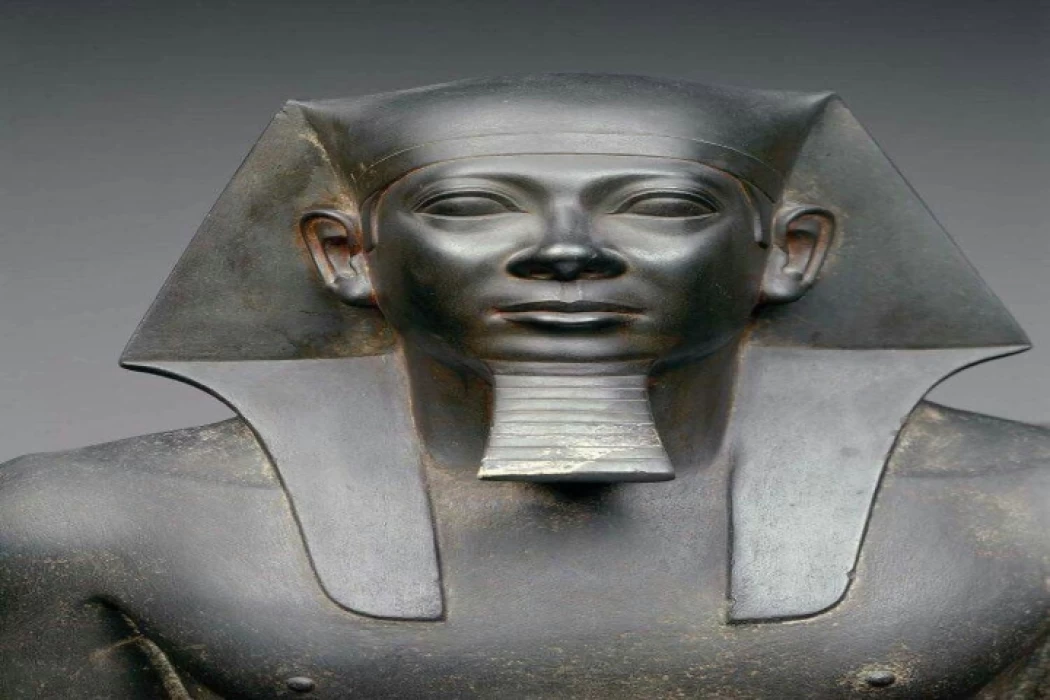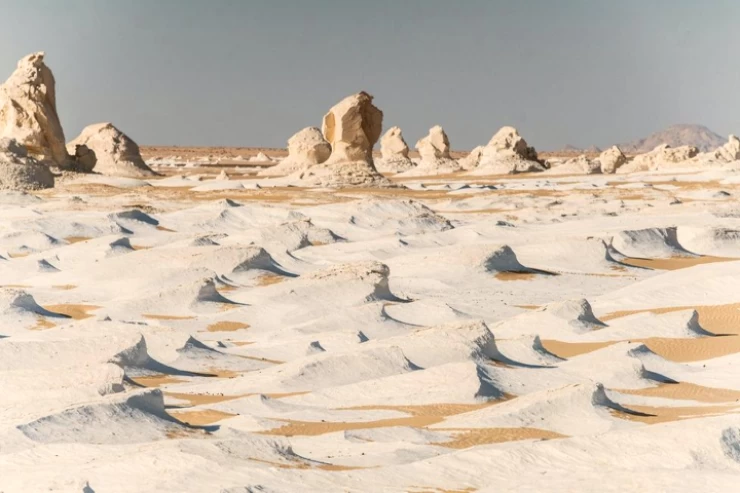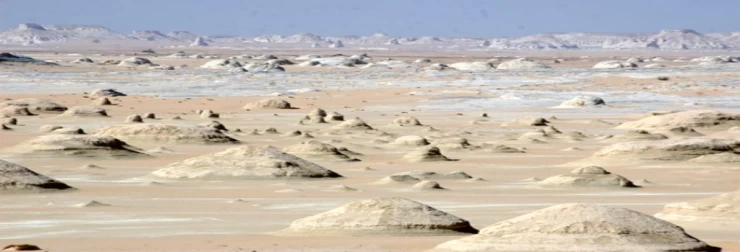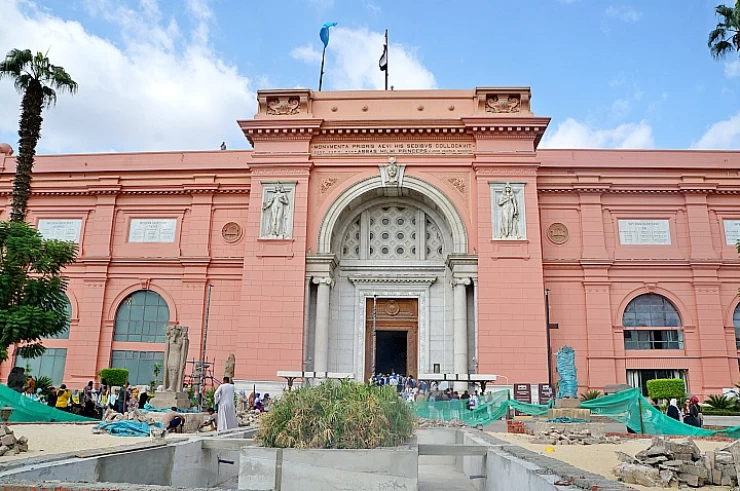
King Menkaure | Mycerinus
The fifth king of the 4th Dynasty
King Menkaure was Khufu's grandson and the son of King Khafre. He built the third of the pyramids on the Giza Plateau, and with a small base area, the original pyramid is 65 meters high, making King Mankhaura's pyramid the smallest on a square base.
This small size is due to several factors, including the small area remaining on the Giza plateau and the material used for the outer shell of the pyramid of King Menkaure; his predecessors used limestone to clad their pyramids, while King Menkaure used granite brought from Aswan, until the sixteenth pillar. Granite brought from Aswan, more than 800 km from Giza, up to the sixteenth pillar, was much more difficult than limestone to ship and transport, yet only the lower quarter of the pyramid is covered with granite, while the rest of the pyramid was clad in limestone.
Unfinished projects help archaeologists understand the methods used to build pyramids and temples, and south of Mankhaura's pyramid are three satellite pyramids, each of which is accompanied by a temple and infrastructure, and as next to the largest pyramid, three smaller pyramids can be seen next to the pyramid of Molt Mankhaura, and these pyramids were used to bury the queens of his reign, and the first pyramid belonged to King Mankhaura's wife, Queen Khar Merar Nabti II.
However, his harem has not been discovered, but it is believed that the largest pyramid of the Three Queens was the harem, and King Menkaure died before the completion of his pyramid group; many of the granite blocks of the pyramid had not been polished.
The funerary temple and the private valley temple were supposed to be made of huge blocks of limestone clad in granite, but they were actually built using white adobe bricks. Despite these poor capabilities, the veneration of King Menkaure continued for another 300 years after his death, and due to the king's death, his son King Shepseskaf completed the cladding and the rest of the pyramid group.
The Valley Temple of King Menkaure was excavated between 1908 and 1910 AD by Georg Reisner, who found a large number of statues, mostly of King Menkaure alone, or as a member of group statues, all carved in the Old Kingdom artistic style, with a high degree of detail, and in the funerary temple, the foundations and the inner core were made of limestone. The floors began with granite.
An inscription in the funerary temple reads, “He made it (the temple) a memorial to his father, the king of Upper and Lower Egypt.” For the Valley Temple of Mankaura, the king's architects planned to build a massive building with limestone and granite architecture, which dominated the funerary complex's receiving harbor, and for the Valley Temple of Mankaura, the king's architects planned a monumental building with limestone and granite architecture.
In the Egyptian language, the Pyramid of Menkaure was referred to as "Netjer-er-Menkaure," or "Menkaure is divine." This refers to the king for whom this pyramid was constructed to serve as a tomb for his afterlife.He is the builder of the third greatest pyramid in the Giza Necropolis, which ended a great era of architectural magnificence. The Pharaoh is considered to be the son of King Chephren and Queen Khamernebti I. He got married young to his sister, who had become the future queen, Khamernebti II. She bore him a son called Khunre, who probably died at a very young age.
Menkaure was the king who built the third pyramid; in ancient Egyptian, "Netjer-er-Menkaure," "Menkaure is Divine," is what this king's pyramid was referred to in the ancient Egyptian tongue. It is also the termination point in monumental constructions at Giza for a pyramid meant as an afterlife tomb. Menkaure, also called Mycerinus, was born of King Khafra and Queen Khamernebti I. He married Khamernebti II, who became a queen after having a son who was named Khunre and who likely died young. His other son was called Shepseskaf, who succeeded him, and one daughter, Khentkaus I, who probably married Userkaf, the first king of the Fifth Dynasty. No predecessor of Menkaure had ever been rated as wise and benevolent king by the populace, and as such his pyramid was not of much greater size.
However, one could say that the scaling down probably had no solid reason backing it; rather, speculations from a few commentators could turn the economy over it, or that some changed religious ideas that increasingly put funerary temples above erectile pyramids, or even too rigid as the Giza Plateau started to get crowded. The pyramid remained incomplete on the death of Menkaure, as it was finalized under Shepseskaf; the upper part was clad in fine limestone while the lower portion remained harsh granite. Cairo Top Tours will take you on an exceptionally interesting trip to the Pyramids of Giza, including the stunning Great Pyramid of Khufu, the awe-inspiring Pyramid of Khafra, and the notable Pyramid of Menkaure. Also to be appreciated will be the Great Sphinx, the immortal guardian to all within the necropolis. All this will be under the guidance of expert guides who will inform you of the history, culture, and traditions of ancient Egyptians while giving you the perfect possible chance to capture moments to remember at these historic sites.
One could say that scaling down had no solid reason to back it; merely speculation from a few commentators could turn the economy about, or that some changed religious ideas increasingly placed funerary temples above pyramids in terms of erection, or else too rigid as the Giza Plateau began to get crowded. The pyramid was left incomplete at the death of Menkaure and was seen through to completion under Shepseskaf; the upper part of this was clad in fine limestone, while the lower slots were left in rough granite. A trip to Cairo Top Tours promises a high-interest overview of the Pyramids of Giza, including the stunning Great Pyramid of Khufu, the awe-imposing Pyramid of Khafra, and the noteworthy Pyramid of Menkaure. Also included will be the Great Sphinx, an everlasting guardian of all in the necropolis. All this will be under the experienced guides who will narrate to you the history, culture, and traditions of ancient Egyptians while giving you the best possible chance to capture moments to immortalize at these historical sites.
There is no solid ground for this scaling down, but some commentators suggest that it is due to economic reasons, that or some changed religious outlook now putting funerary temples above pyramid size, or due to practical reasons as the Giza Plateau started getting crowded. The pyramid remained unfinished upon Menkaure's death and was completed by Shepseskaf, with its upper part clad in fine limestone while the lower portion was left in rough granite. Cairo Top Tours will take you on a really interesting journey to the Pyramids of Giza, including the wonderful Great Pyramid of Khufu, the majestic Pyramid of Khafra, and also the famous Pyramid of Menkaure. You will also be privileged to admire the Great Sphinx, the immortal guardian of all within the necropolis. All this should be done under the guidance of expert guides who will inform you about the history, culture, and traditions of ancient Egyptians while giving you a chance to capture moments to remember at these historic sites.


















